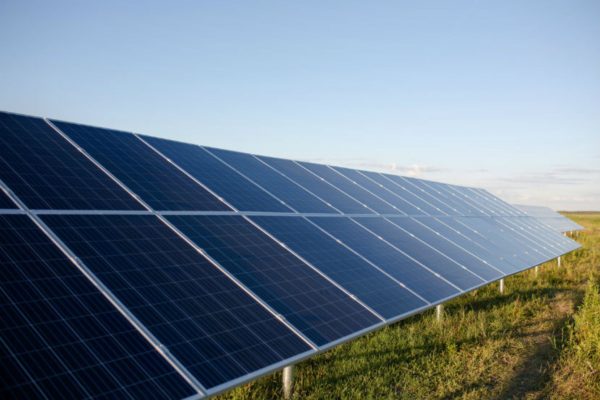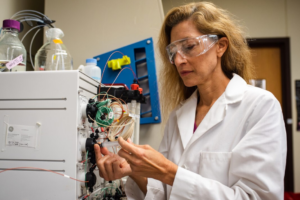In the race to build a greener electricity supply, some states are moving faster than others.
The jockeying for position that accompanies this dash to become green, greener, greenest illustrates the dangers of making bold predictions in energy policy, which subsumes not only technical and economic questions, but political ones as well.
This interplay of energy policy and politics escalated recently in an unusually heated public kerfuffle between scientists who study the evolving electric generation mix.
A group of respected energy researchers released a paper in the journal Proceedings of the National Academy of Sciences that poked holes in a widely cited 2015 study of how to power the U.S. using only renewable energy sources. The new paper triggered a pointed response from the original study’s author and triggered a lively debate in the energy blogosphere.
In red states such as Texas and Iowa, market forces are driving rapid growth in wind generation. In blue states such as New York, policy is pushing the development of smaller, decentralized sources, most prominently rooftop solar.
Another blue state, California, appears poised to adopt legislation that would require the state’s utilities to obtain 100 percent of their electricity from renewable sources by 2045. A commitment to a 100 percent goal means that Californians will have to face difficult tradeoffs between reliability, affordability and environmental performance – tradeoffs that proponents of renewable energy frequently ignore and opponents often exaggerate.
But cities such as Georgetown, Texas, and Aspen, Colorado, already claim to be meeting the 100 percent renewable standard. What, then, is so special about the proposed California law?
For Georgetown and Aspen, “100 percent renewable” means that those cities purchase as much renewable electricity as they can get. It does not mean that all the power they consume comes from renewable sources, however. That’s because there are times when renewable power isn’t available – on windless nights, for example. When that happens, both cities consume nonrenewable power from the regional grid.
California could go the way of Georgetown and Aspen and take nonrenewable power from the western grid when green power is unavailable. But the state also aggressively subsidizes batteries and other kinds of electricity storage, and it may be trying to lay the foundation for a truly 100 percent renewable power supply: one that generates renewable energy for direct use now and also stores it for use later when the wind isn’t blowing and the sun isn’t shining.
That would require building a LOT more renewable generation, electricity storage and transmission capacity. Right now, that kind of commitment looks politically unrealistic and expensive: a little like jumping off a cliff and hoping to invent a parachute on the way down. States can change their minds, so the California proposal is more of an experiment, one from which others should be able to learn.
Proponents of rapid, deep decarbonization sometimes assume away these tradeoffs by arguing that the 100 percent goal will be technically, politically and economically achievable by the time 2045 rolls around. But their optimism may not be as pie-in-the-sky as it looks right now, for three reasons.
First, the costs of wind and solar power continue to decline, making both technologies competitive with natural-gas-fired generation in some places, even without subsidies. Second, grid operators tend to take power from wind and solar generators first, because wind and solar incur low marginal costs. Third, though renewable power is intermittent, grid operators have proved to be surprisingly adept at adjusting to sudden fluctuations in renewable generation, even when renewables command a large share (up to 50 percent) of overall electricity generation.
That said, even though integrating renewable power into the electric mix is getting cheaper and easier, we still depend on nonrenewable sources when the wind doesn’t blow and the sun doesn’t shine. Red states are likely to keep natural gas generators on the grid for just that eventuality, because it is prohibitively expensive to build a large enough system of wind farms, solar arrays, transmission lines and batteries necessary to ensure a reliable supply.
For the time being, it’s much cheaper to back up renewable power with natural gas or other forms of nonrenewable generation. Perhaps by 2045 that no longer will be true.
David Spence is professor of law, politics and regulation at The University of Texas at Austin, where he teaches in the McCombs School of Business and the School of Law.
A verison of this op-ed appeared in the East Bay Times, San Jose Mercury News, San Antonio Express News, Abilene Reporter News, and Psychology Today.
To view more op-eds from Texas Perspectives, click here.
Like us on Facebook.




